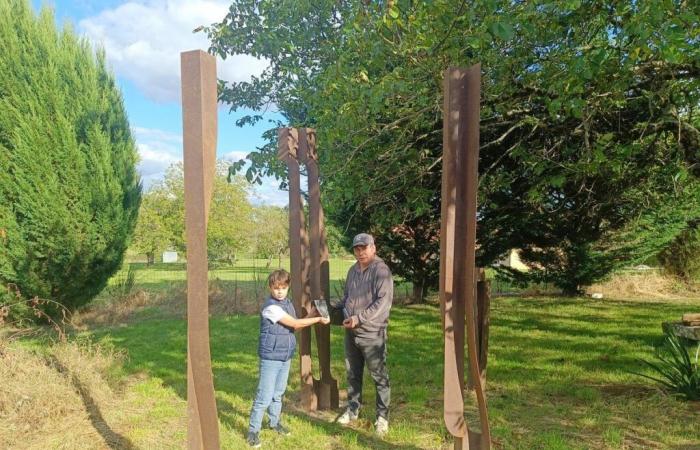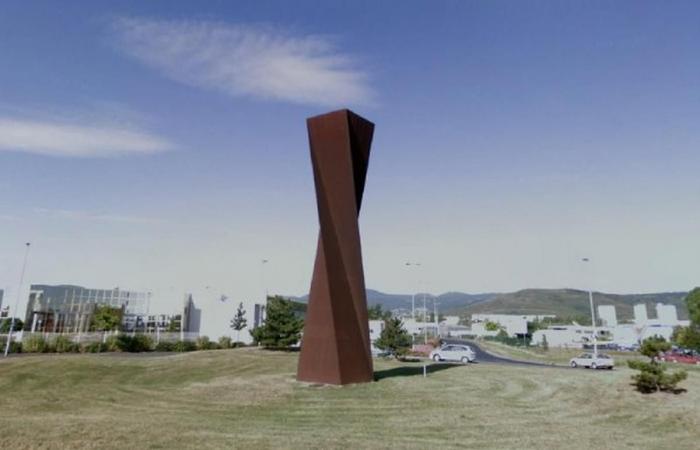Station No. 18, work by Jorge Dubon created for the 1968 Mexico Olympic Games.
Repro CL
Repro CL
The sculpture created on a roundabout in Clermont-Ferrand.
Jorge Dubon, born in Mexico in 1938, studied art and architecture in Mexico City. He continued at the Institute of Urban Planning in Paris, London, and then New York. He became known in 1968 during the Mexico City Olympic Games. On this occasion, he created a monumental concrete sculpture near the stadium. He continued to make his mark with metal works in Mexico City in 1971. In 1983, on the occasion of the bicentennial of the independence of the United States, he created two large sculptures in sequoia. In 1988, for the Seoul Olympic Games, he also created monumental sculptures here.
He mainly works with wood (mahogany plane tree), metal, and stone (often marble). He also sometimes draws inspiration from the art of his Aztec ancestors. In France, one of his sculptures stands on a roundabout in Clermont-Ferrand, another in Oléron Sainte-Marie, allée du fronton. Others can be seen in Hungary, Belgium, Andorra, Madrid, Antwerp, etc. “He wanted his works to be accessible to the public free of charge,” explains his son Basile.
Chainsawed wood
In 1968, Jorge Dubon met a young French woman who was doing some interpreting during the Olympic Games in Mexico. This young French woman was from Saint-Sornin in Charente. In 1972, their son Basile was born in Mexico. A few months later, the family moved to the Paris region. “I spent my entire childhood surrounded by sculptures. If my father had this pied-à-terre in the Paris region, he also traveled the world to meet the demand for sculpture creation, I sometimes went months without seeing him,” explains Basile.
“Art revives what nature can no longer keep biologically active or in motion.”
The sculptures presented this weekend in Montbron are made of metal and wood. The artist worked the wood with a chainsaw, often on an entire tree trunk. The work can be articulated, unfolded. “These sculptures are only material returning to a new life. Art revives what nature can no longer maintain biologically active or in movement,” the sculptor explained at the time.
Basile Dubon settled in Montbron in 2015. A bit of a return to the roots of his maternal family. He spent part of his holidays in Pervilles de Saint-Sornin. “I learned to swim in the Tardoire at La Chaise,” he jokes. In Montbron, he does computer troubleshooting, is interested in artificial intelligence, and is also the founder and host of the radio station “La 16”.
It was with his brother that he decided to repatriate their father’s works stored in the Paris region to Montbron, and to organize this exhibition with free access at his home. A good thirty works are to be discovered.
The exhibition takes place Saturday and Sunday, September 22 from 10 a.m. to 6 p.m. at 6 rue de chez Maridou in Montbron. Free admission. More info: jorgedubon.art







